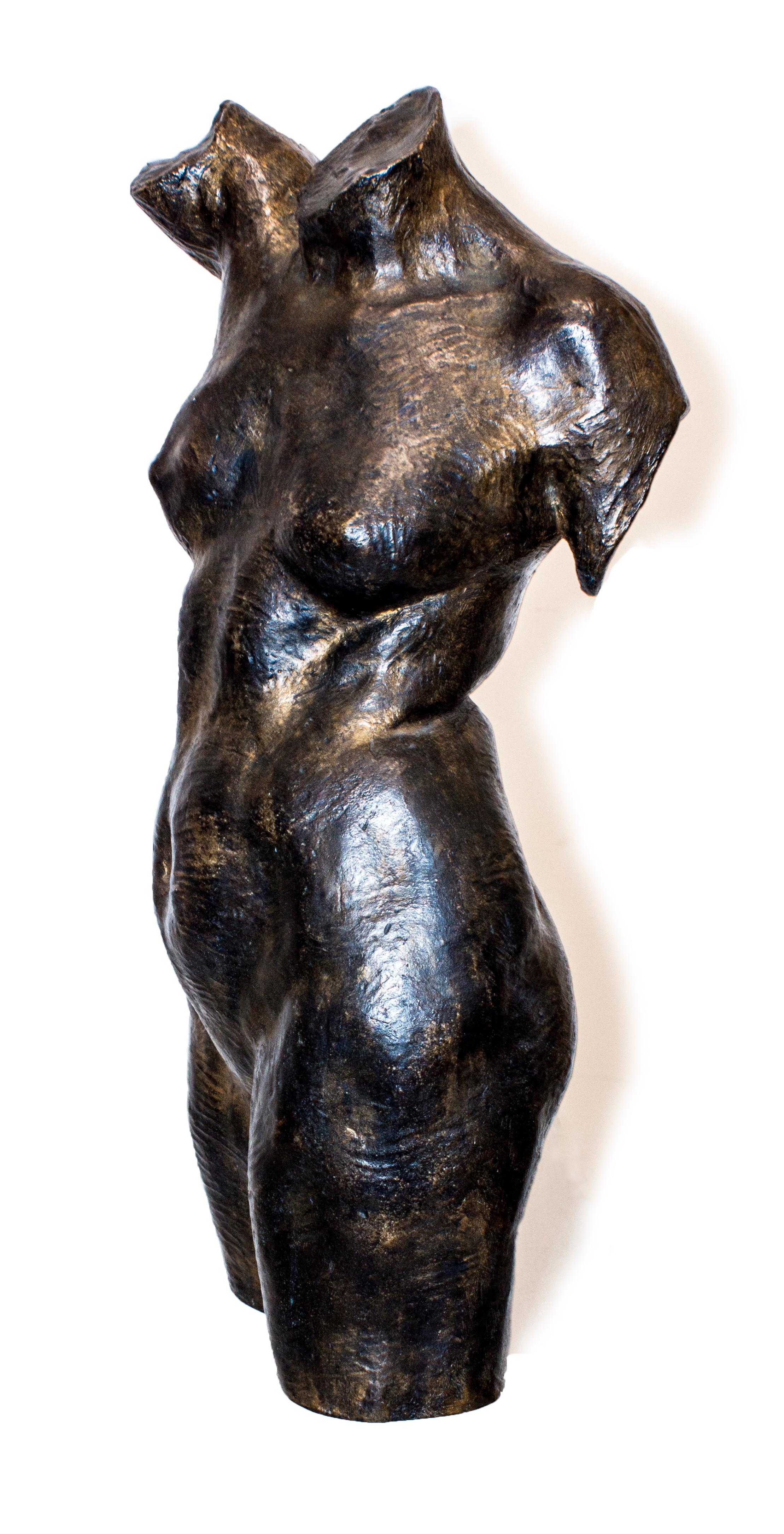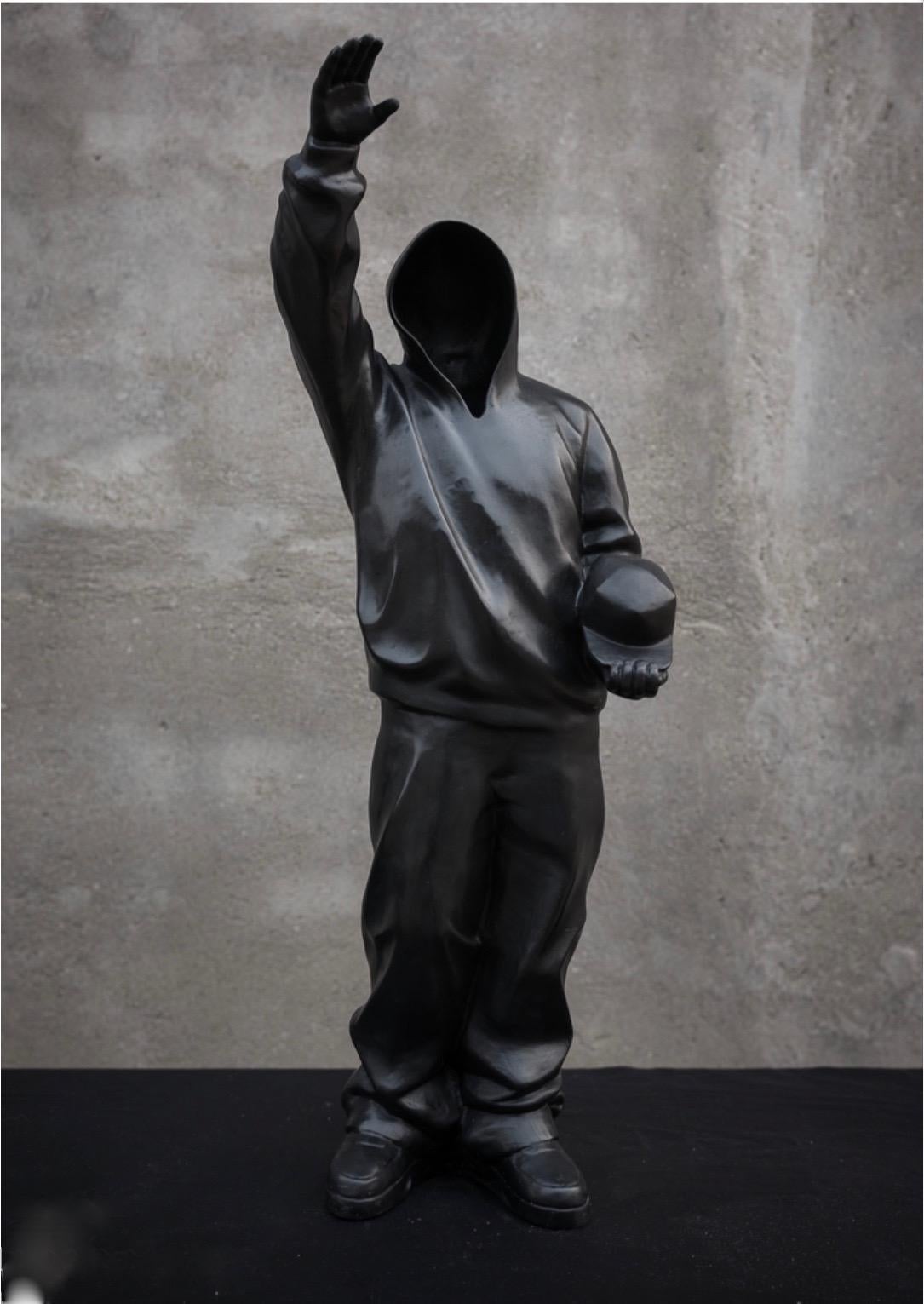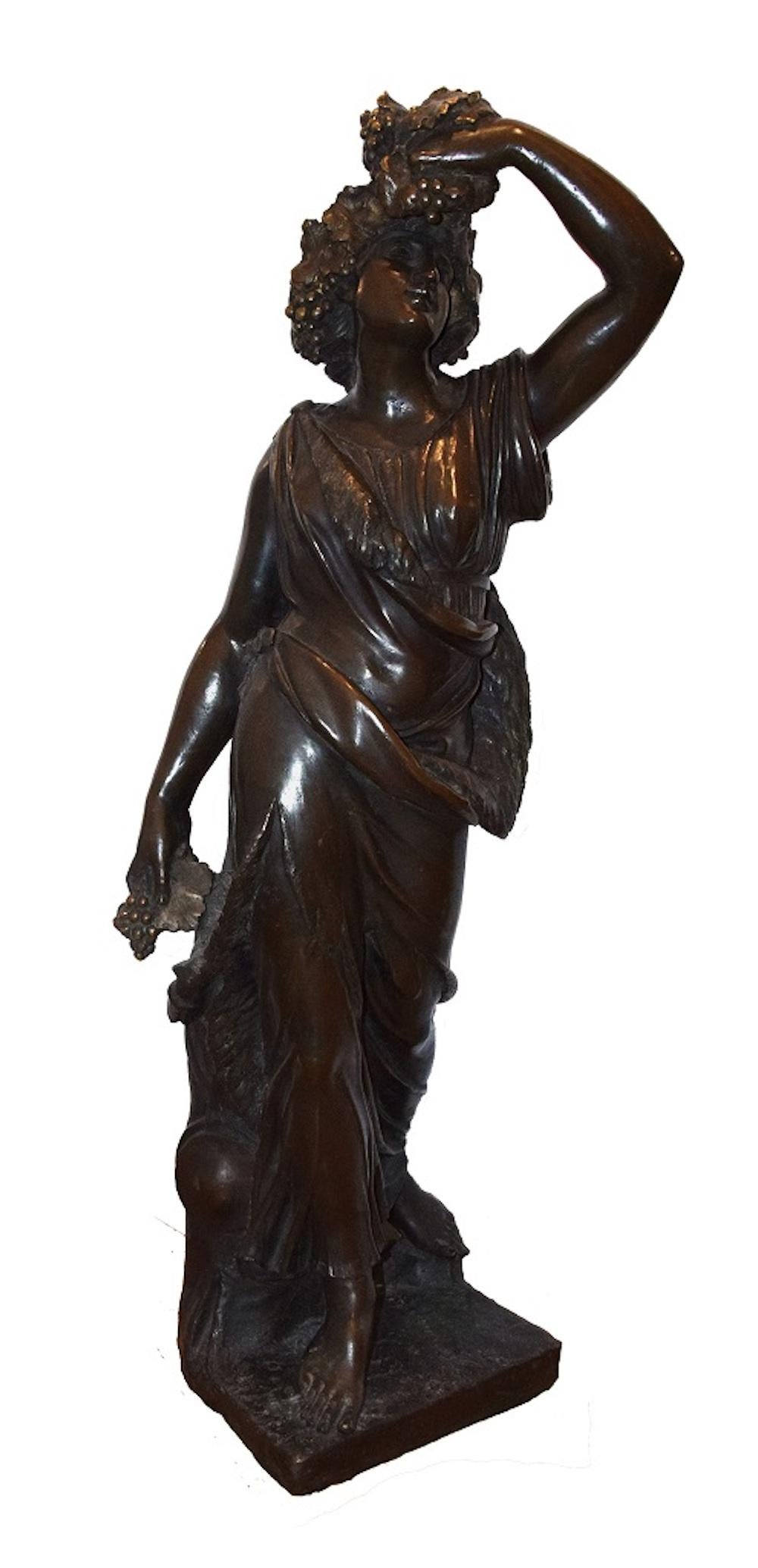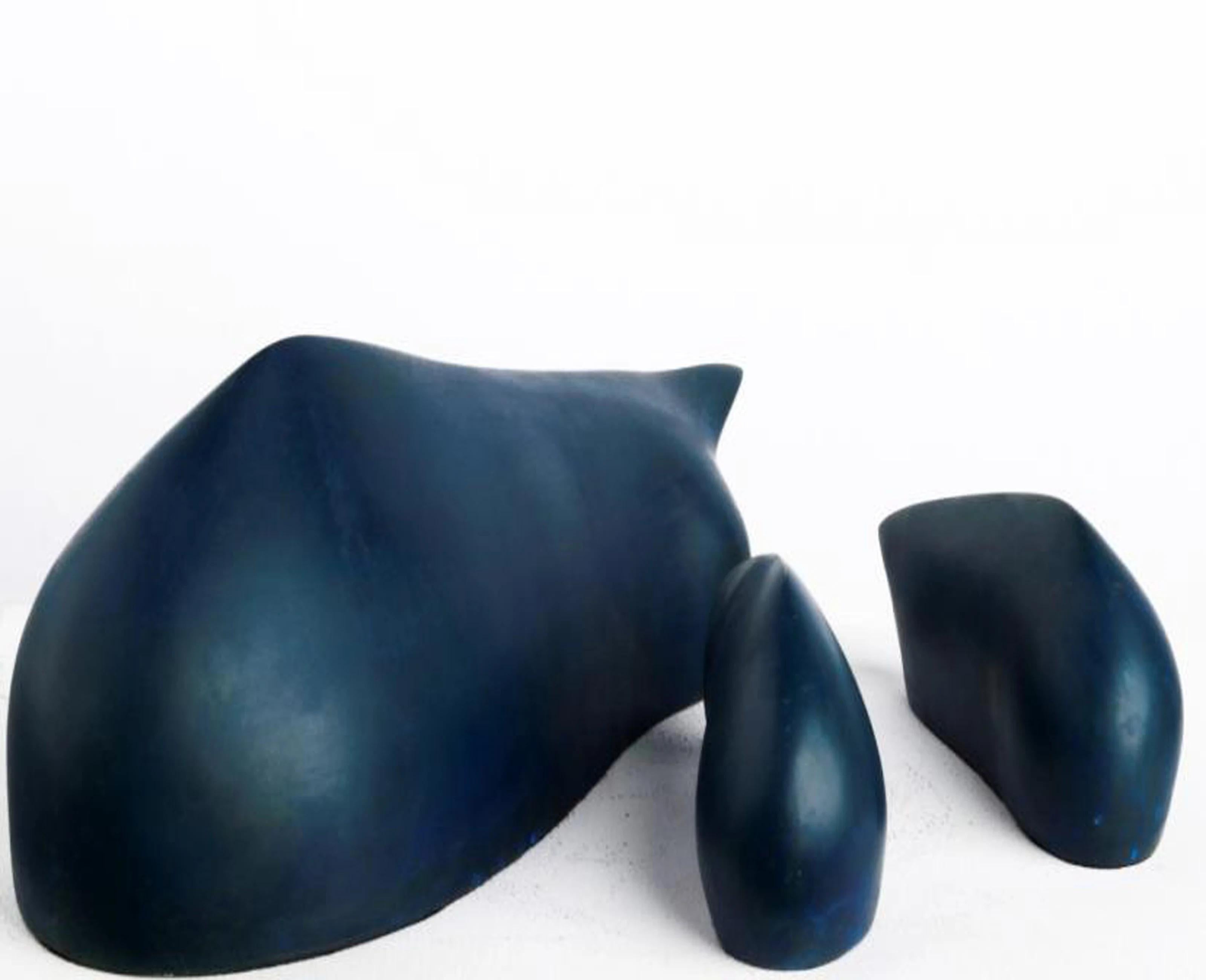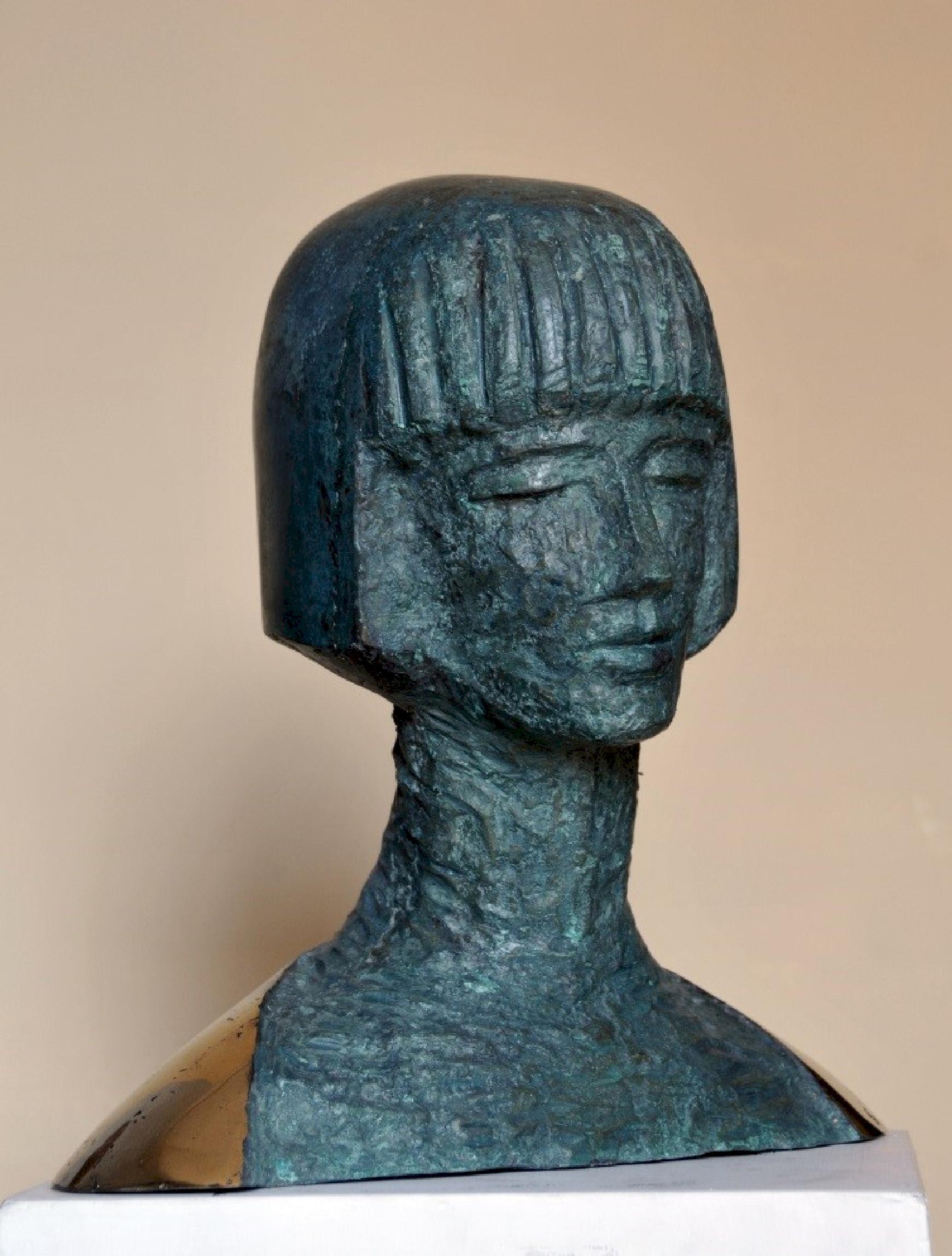Items Similar to Mare - hunting horse by Josuë Dupon 1864-1935
Want more images or videos?
Request additional images or videos from the seller
1 of 10
Josuë DuponMare - hunting horse by Josuë Dupon 1864-1935
About the Item
A beautiful large bronze sculpture of a proud standing mare. Old sand cast created during the artist Josuë Dupon's lifetime.
Josuë Dupon (also Josué or Josue Dupon) was a Flemish sculptor and engraver. His work also includes painting and graphics.
He received his training through evening classes at the academy of Roeselare and Antwerp (1884) and later at the National Institute of Fine Arts (1887). In 1891, he won a gold medal with the monumental sculpture group Samson kills the lion and was runner-up in the Prix de Rome for sculpture. From that year on, his work appeared regularly in exhibitions at home and abroad. His reputation was such, that he became one of a select group of sculptors allowed by King Leopold II to carve statues in Ivory, which was imported from the Congo, the Belgian colony. In 1893 his exceptionally refined ivory statue of Diana was bought by the Antwerp Royal Museum of Fine Arts, which also acquired his spectacular bronze Vulture defending its prey a year later.
Working in every genre and mastering every technique and material, Josuë Dupon became best known as a sculptor of exotic animals. He was equally capable of faithfully expressing anatomical detail as of rendering the animals' nature. Josuë Dupon was a technically faultless realist, with a sense of the dramatic, a feeling for decorative complexity and a tendency towards idealizing. The placement of his camel driver and two bronze groups at the entrance to Antwerp Zoo confirmed this reputation as animalier.
The career that Dupon subsequently built, brought him numerous important awards and an appointment as professor at the Antwerp Academy, a tenure he held between 1905 and 1934. Besides animals, he sculpted busts, war memorials and public monuments. For one of the largest sculptural monuments and the largest fountain in the city of Buenos Aires, called Monument of the Two Congresses, he collaborated with his good friend, the Belgian sculptor Jules Lagae. Josuë Dupon created several statues of mighty condors for this monument.
At the start of his career his conception of art was strongly influenced by traditional 19th century artistic ideals. After the turn of the century his compositions and surface treatment changed and became more modern. He met Rembrandt Bugatti around 1905 or 1906 in the 'Jardin des Plantes' in Paris and invited him to Antwerp. Bugatti began travelling to Antwerp in 1906 to observe and sculpt the inhabitants of its zoo, which was then considered the best in the world, and Dupon allowed Bugatti to stay with him during several of his early visits. As such Dupon became a friend and a bit of a father figure to Rembrandt Bugatti.
Dupon did not play a very active part in artistic movements or associations. Dupon remains an important sculptor not only through his body of work but also because of the influence he exercised through interactions and collaboration with other sculptors such as Lagae, Bugatti and Bourdelle but also because he trained leading sculptors such as Albéric Collin (1886-1962), Willy Kreitz (1903-1982) and Albert Poels (1903-1984).
- Creator:Josuë Dupon
- Dimensions:Height: 20.48 in (52 cm)Width: 19.69 in (50 cm)Depth: 5.91 in (15 cm)
- Medium:
- Period:
- Condition:
- Gallery Location:Gent, BE
- Reference Number:1stDibs: LU2140213716232
About the Seller
5.0
Vetted Seller
These experienced sellers undergo a comprehensive evaluation by our team of in-house experts.
Established in 2018
1stDibs seller since 2022
Typical response time: 16 hours
- ShippingRetrieving quote...Ships From: Gent, Belgium
- Return PolicyA return for this item may be initiated within 10 days of delivery.
More From This SellerView All
- Auguste DE WEVER (1836-1910) Hindu BirdcatcherLocated in Gent, VOVHindu Birdcatcher A fine quality, a nineteenth-century bronze cast of the Hindu bird-catcher standing on an elephant skull and holding two birds in the air which are sitting on a bambu stick by Auguste De Wever (Belgian 1836-1910). Old cast probably by the Compagnie des Bronzes foundry signed...Category
19th Century Figurative Sculptures
MaterialsBronze
- Georges-Lucien GUYOT (1885-1973) German Shepherd DogLocated in Gent, VOVLying German Shepard Dog A bronze cast of a resting German Shepard Dog, by Georges-Lucien Guyot (1885-1973). An early work, and a cast of 1920 with a brown patina with some reddish u...Category
20th Century Figurative Sculptures
MaterialsBronze
- Italian Animal Bronze : Battling Rams by Sirio TofanariLocated in Gent, VOVA very rare bronze cast of two battling Rams, by Sirio Tofanari (1886-1969). An old cast with a dark brown shaded patina. On a heavy green marble steppe...Category
1930s Art Deco Figurative Sculptures
MaterialsMarble, Bronze
- Animal Bronze: Lying eagle by Alberic Collin (close friend of Rembrandt Bugatti)Located in Gent, VOVNumbered 1/8 Cast Fonderie Rocher A fine cast with a vivid green patina of a bird of preyCategory
1930s Nude Sculptures
MaterialsBronze
- Edgard Degas: Horse Clearing an Obstacle (work 48 /certified by Comité Degas)By Edgar DegasLocated in Gent, VOVHorse Clearing an Obstacle (work number 48) Bronze with dark brown green patina bearing the stamp of the signature "Degas", Numbered IV/IX and dated 1998 Posthumous lost wax casting as of 1998. Stamp of Valsuani. Signed Degas The work is a sought-after rarity in terms of Degas’ sculptures. This bronze is distinguished by the fact that it is a Valsuani bronze, meaning it faithfully records Degas’ wax version’s as it appeared at the time of its creation. Most Degas' bronzes that are found on the market were cast by Hébrard – these serialized bronzes are surmoulages, or “aftercasts,” that were cast from the modèle bronzes currently in the Norton Simon Museum (Pasadena). Because these Hebrard bronzes...Category
1880s Impressionist Figurative Sculptures
MaterialsBronze
- Certified Edgard Degas Bronze of a horse : (Horse walking at a high pace)By Edgar DegasLocated in Gent, VOVCheval marchant au pas relevé is one of the artist’s most elegant and exacting models of a horse. It underscores Degas’s deep understanding of equine anatomy and his ability to render it with lightness and charm. Known for his focus on contemporary subjects, Degas first began depicting horses in the 1860s. As a member of the prestigious Jockey Club in Paris, Degas was a habitué of the racecourses at Deauville and Longchamps, where he could study the beauty of thoroughbred horses at close quarters. Although the artist was not an active participant himself, equestrian sports fascinated Degas throughout his life, as it allowed him to capture the full range of the horse’s movement in a wealth of poses. Bronze with dark brown patina bearing the stamp of the signature "Degas", numbered IV/IX and dated 1998. Posthumous lost wax casting as of 1998. Stamp of Valsuani. The work is a sought-after rarity in terms of Degas’ sculptures. This bronze is distinguished by the fact that it is a Valsuani bronze, meaning it faithfully records Degas’ wax version’s as it appeared at the time of its creation. Most Degas' bronzes that are found on the market were cast by Hébrard – these serialized bronzes are surmoulages, or “aftercasts,” that were cast from the modèle bronzes currently in the Norton Simon Museum (Pasadena). Because these bronzes are second generation, they are smaller and far less detailed than the current bronze. This example, however, was cast by Valsuani from a plaster that was taken directly from Degas’ waxes, according to scholarship by the art historian Dr. Gregory Hedberg. These plasters were created by Degas’ sculptor friend Albert Bartholomé shortly after Degas completed his wax figurines. Thus, they record the earliest versions of Degas’ wax sculptures, before they were damaged by time or handling, and before Degas himself altered the works. The Hébrard bronzes...Category
1880s Impressionist Figurative Sculptures
MaterialsBronze
You May Also Like
- Woman's Chest - Bronze Sculpture by Aurelio MistruzziLocated in Roma, ITEdition of 100 copies numbered and signed by the artist. Excellent conditions. Aurelio Mistruzzi was an Italian sculptor and medalist. He attended the Udine ...Category
1930s Figurative Sculptures
MaterialsBronze
- "Leader" Porcelain Sculpture Edition 10/10 by Huang YulongBy Huang YulongLocated in Culver City, CA"Leader" Porcelain Sculpture Edition 10/10 by Huang Yulong * * * ATT: handling time might take up to 25 business days * * * ABOUT THE ARTIST Huang Yulo...Category
21st Century and Contemporary Contemporary Figurative Sculptures
MaterialsBronze
- (Untitled)Located in Fort Washington, PAMedium: Bronze Contact for dimensions.Category
20th Century Figurative Sculptures
MaterialsBronze
- Follower of Bacchus - Bronze Sculpture by Unknown Italian Artist Late 1800Located in Roma, ITFollower of Bacchus is an original bronze sculpture realized by an Italian Sculptor in the end of the XIX century. Bronze casting. Made in Italy. H: 100 cm. Excellent conditions. ...Category
Late 19th Century Figurative Sculptures
MaterialsBronze
- "Family of Whales" Abstract Bronze Sculpture (3 Pieces) by Eman BarakatLocated in Culver City, CA"Family of Whales" Abstract Bronze Sculpture (3 Pieces) by Eman Barakat 3 pieces: 5" x 13" x 6" inch Eman Barakat is an Egyptian Postwar & Contemporary artist who was born in 1988...Category
21st Century and Contemporary Contemporary Abstract Sculptures
MaterialsBronze
- "Patty" Bronze Sculpture 17" x 17" x 9" inch by Sarkis TossonianBy Sarkis TossonianLocated in Culver City, CA"Patty" Bronze Sculpture 17" x 17" x 9" inch by Sarkis Tossonian Sarkis Tossoonian was born in Alexandria in 1953. He graduated from the Faculty of Fine Arts/Sculpture in 1979. He s...Category
21st Century and Contemporary Contemporary Abstract Sculptures
MaterialsBronze
